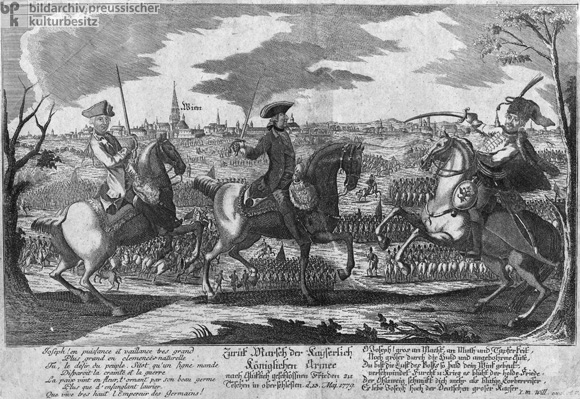













INTRODUCTION | DOCUMENTS | IMAGES | MAPS | EDITOR
|
After the death of Elector Maximilian III Joseph of Bavaria (r. 1745-77) brought the Bavarian line of the Wittelsbach dynasty to an end, Joseph II attempted (against the advice of his mother, Maria Theresa) to exchange the Austrian Netherlands (Belgium) for the heartlands of historic Bavaria. Charles Theodore, the Wittelsbach Elector Palatinate (1742-99) and designated heir, agreed to the bargain because he wanted his illegitimate children to be recognized as princes in the Holy Roman Empire. However, Frederick II (“the Great”) of Prussia, the Habsburgs’ perennial foe, opposed the exchange. Austria’s failure to withdraw from the territories it already occupied resulted in the War of the Bavarian Succession (1778/79), an inglorious affair that saw poorly provisioned troops on both sides digging through fields to supply themselves with potatoes. After inconclusive minor engagements, Maria Theresa corresponded directly with Frederick, and Russian and French arbitration led to the Peace of Teschen on May 13, 1779. The treaty ceded the tiny Inn Quarter [Innviertel] to Austria, confirmed Prussia’s claim to Ansbach-Bayreuth, and compensated other German princes for their claims. Charles Theodore was confirmed as Elector of Bavaria. The image below is an allegorical depiction of the Peace of Teschen. It shows imperial and royal Austrian troops marching back to Vienna (in the background is St. Stephen’s Cathedral) and praises Joseph II as a prince of peace, calling the olive branch of peace a greater credit to him than the laurel wreath of victory. Copperplate engraving by Johann Martin Will (1727-1806), c. 1800.
© Bildarchiv Preußischer Kulturbesitz |
 print version
print version return to image list
return to image list previous image
previous image
